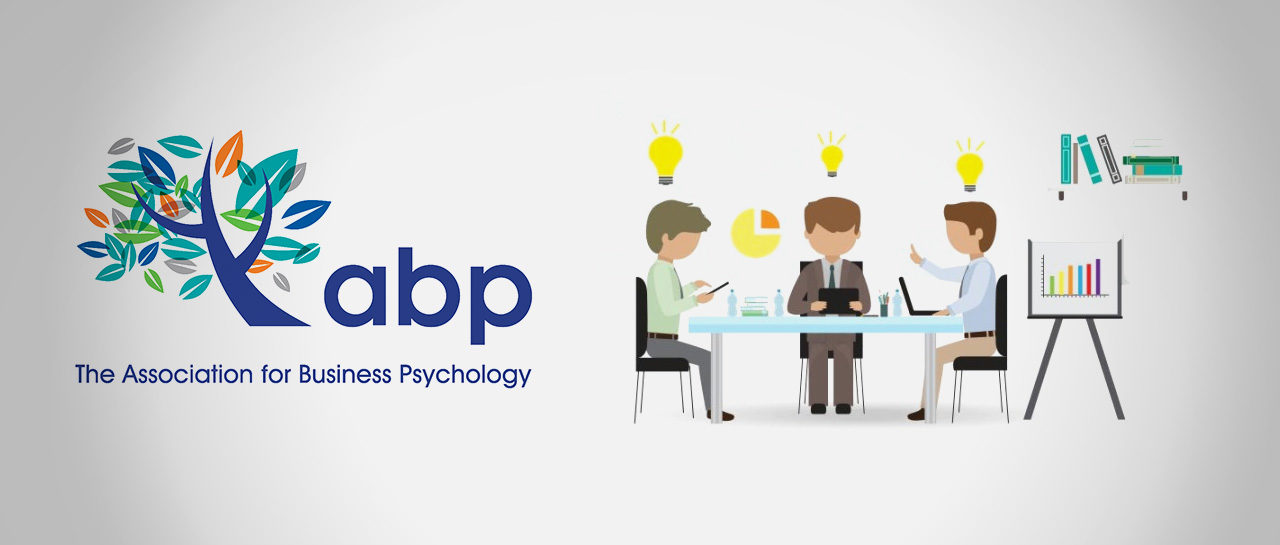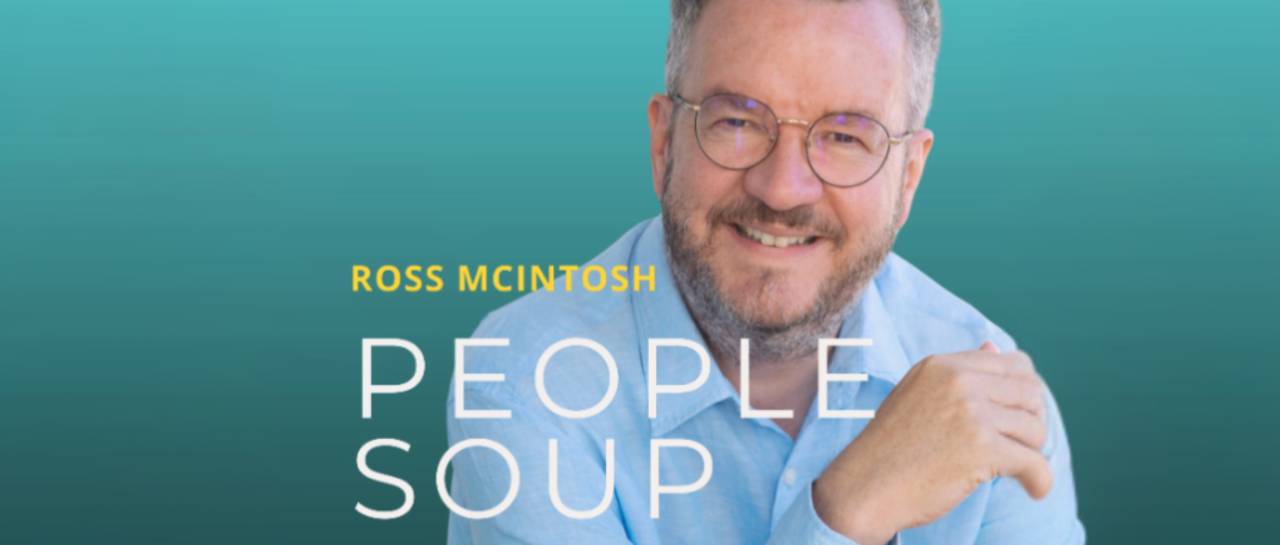Article based on webinar delivered in February 2024 – ‘How behavioural science can support the cultivation of authentic leadership.’ Author: Ross McIntosh In this article I’ll present my conceptualisation of the skills from Acceptance and Commitment Therapy (ACT) to support leaders in the development of…

11th February 2021
Joint ABP/E4S event
Maintaining Engagement and Control of your Business when nothing appears to be going to plan
The ABP and Engage4Success collaborated in promoting a highly successful event in January 2019 and 2020. Not wishing to be defeated by the pandemic and the need to be uplifted during midwinter, the ABP and E4S were pleased to be able to collaborate once again, this time in an online event.
The event provided the opportunity to hear how Business Psychology and Employee Engagement can come together to deliver positive solutions to seemingly intractable problems, especially in remote working, but the content could be applied equally more generally in the workplace.
The event included three presentations, a case study in performance improvement through employee engagement, building trust in organisations to reduce risk of dysfunctionality and improve effectiveness, and one which looked at how each one of us could improve our own performance and give ourselves the best chances of success.
Sandy Wilkie
Greenhill Vista Ltd
Obtaining accurate information and managing data in the workplace is key to maintaining performance and engagement, argued Sandy Wilkie at the February ABP event held virtually. Taking a holistic view is critical to the management of the patient/staff experience and a structured and sensitive approach to the use of the vast amount of available information helps monitor and improve the level of staff morale and engagement in the workplace.
Sandy used as his example Bolton NHS Foundation Trust, where he led in Staff Engagement work, and used focus groups data with 220 staff in the organisation to help design new organisational values. It has been shown by the NHS and other public sector organisations that the setting of realistic ambitions can lead to internal cohesion and can make a real difference in performance. Taking a benchmarked values based approach, the Trust used the Barratt Values model and their Cultural Values Assessment (CVA) tool. The CVA compares “what we are currently like” with “what do we aspire to be like”, encourages collaboration, open and frank conversations, leading to staff being more engaged and aspiring to the upper end of the performance model. At a more complex level it provides a useful range of options for analysing personal values in considerable detail and provides opportunities for aligning more closely personal values with those of the organisation for even greater benefits and providing opportunities for improved leadership.
A separate set of values, “Trust Values”, are enshrined in the elements of Vision, Openness, Integrity, Compassion and Excellence (acronym VOICE), and are levelled for appropriate relevance within the model: for example, compassion is a value which needs to be adapted for specific relevance. They mapped on to the Barratt model, and specifically on to three levels: level 3 (Excellence), level 5 (Openness, Integrity) and level 7 (Vision, Compassion). 909 people took part in a survey to assess the prevailing culture. Personal Values were compared to current Trust values and a desired future state, and then data was evaluated and then correlated to assess how far the organisation had to travel to attain its desired culture values.
An assessment of cultural “entropy” helped identify which areas or departments were struggling to embrace a positive culture and needed support. The real value of this work is that it anticipates and enables monitoring of problem areas. Programmes of change were identified and actions agreed going forward. The overall aim was to move the organisation from being predominantly level 3 (stuck in Bureaucracy and Strict Hierarchy) towards levels 4-5 (A greater level of a feeling of fluid continuous improvement and a sense of balance and cohesion). However, in order to do this a shift in leadership style was required, which is adaptive, values-based and compassionate.
Bolton University Management School provided external evaluation to the process, summarising the positive feedback from staff
- “Values is a pivot point that grounds us”
- “The work provides a core set of values and beliefs informing our decisions”
- “We have a clear sense of who we are, our reason to be – one team pulling together in unity
- VOICE acted as a conduit to tackle difficult questions and address or commend performance” and
- “Pride in Bolton has been restored after a few difficult years”.
The findings from this project chime with the Organisational Effectiveness model by Gallup which links people, strategy, purpose and culture, enshrining these in structures and processes (See Slide 12).
Sandy’s recommendations are that organisations should
- Revisit the employer/employee relationship
- Provide a good foundation by focusing on the People Experience
- HR should be more proactive in enabling organisational effectiveness
- Be values driven and clear about their purpose, creating meaning for people
Achieving tangible results is all about leadership: leaders must aspire to embracing ambiguity and step towards the margins creating real meaning for people at work, while at the same time avoiding obvious and not so obvious pitfalls.
In conclusion, much can be achieved by obtaining relevant data, using it effectively, but then, having identified the issues, implementation requires courage from leaders, who need to be bold, open to possible failure and criticism but at the same time having a clear vision which can promote engagement and mobilising of staff. If necessary, conduct an audit and repeat the process so as to effect continuous improvements in performance.
Mark Hammond / Jen Martin
The Hive
Trust and Vulnerability
What does vulnerability look like in the context of remote working, asked Mark and Jen, trying to challenge us into making ourselves less vulnerable ? Clearly, answers included loneliness, isolated and lacking collaboration. They then really challenged us to consider what it might feel like to be invulnerable, looking at situational stereotypes such as clear purpose, bravado, energised and secure. What quickly emerged from the initial discussion was the potential for appropriate levels of “vulnerability” to be used as a tool for engagement and building of trust leading to the possibility of considerable organisational improvement.
When events seem to conspire against us, exacerbated by enforced remote working, invulnerability might seem to be a desirable quality, implying resilience and an enhanced ability to interact with others and get tasks done. By raising the contrast between vulnerability and invulnerability, however, Mark and Jen challenged us to look at our real preferred options. Highlighting their work with organisations, they thrust a spotlight on a patchwork of personal perspectives: we are not alone in trying to cope with loneliness, we fail under these circumstances to communicate properly with others and we rarely share personal challenges.
But most awkward of all, we fail to ask ourselves the right questions. What makes us vulnerable in the initial instance. Is it simply an inability to communicate? A lack of exercise? Or financial worries which we are unable to share? Whatever the answers, positive outcomes will lead to engagement. But in 76% of cases trust has been identified as the foundation of engagement and, then, vulnerability is foundational to trust. In other words, vulnerability can engender trust which can improve engagement and vulnerability suddenly assumes an importance all of its own.
A definition of vulnerability by Brene Brown is that it is “the emotion that we experience during a time of risk, uncertainty and emotional experience”. It is an emotional response. It is not about sharing emotions regularly, confession sharing and a sympathy seeking tool. Rather, it is more about having hard conversations and giving difficult feedback and admitting mistakes and asking for help.
Why are some people more willing to embrace true vulnerability more than others? A review of internal and external processes and influences shows us that internal influences are trust antecedants such as emotional bonds and personal assessments of “trustworthiness”. These link in to trusting intentions which include positive expectations and an emerging willingness to assume vulnerability. This leads to trusting behaviour and active vulnerability / disclosure based trust, which is hugely influenced by external factors which in addition can derail the road to trusting behaviour / vulnerability. External factors will always outweigh internal factors and it is no surprise that a better balance between the awareness of external and internal will facilitate the chances of vulnerability emerging and greater engagement. This in turn is entirely dependent on management and leadership styles: using the example of an authentic leadership model, Mark and Jen demonstrated that an authentic leadership style tends to lead to better engagement and improvement in organisational effectiveness.
Research by Kahn (1990) concluded that there are three forms of engagement: physical, emotional and cognitive and that these are derived from role/work characteristics, group dynamics and management style, along with depletion of physical and emotional energy and individual insecurity. This links into earlier work by Tuckman which, while defining the stages of team development, gives real insight into who we are and how we manage ourselves, in turn describing how vulnerable we are.
Work by Patrick Lencioni on the five dysfunctions of a team: trust, conflict, commitment, accountability has led to meaningful work on “Invulnerability” which shows that those who see themselves as invulnerable share the undesirable characteristics of absence of trust, fear of conflict, and a lack of commitment. They therefore rarely achieve accountability and results.
How does this relate to the challenges of remote working?
An analysis undertaken by The Hive of when organisation begin to run into difficulties shows that it is to do with the difference between enabling and disabling commitment and engagement which can be linked directly to the degree of vulnerability and perceived invulnerability. These were described in some detail by Mark and Jen, with individual anecdotes describing how active listening, story telling or tumbleweed moments can either lead to engagement and innovation or disillusion depending on leadership and the culture of the organisation. What is particularly interesting about this analysis is that if leaders are perceived to be invulnerable, not only are the burdens on leaders huge, accompanied by lower engagement from staff, but they are many more times likely to fail. More vulnerable leaders, conversely, have created a culture of active listening, shared experiences and a network of communications channels: leadership is important but leaders have already created the infrastructure with the result that the organisation is organic and far less leader dependent in moments of disagreement or crisis.
Vulnerability in remote working should not be micro managed but it has to be managed with tact and sensitivity. It is not without risks : much can go wrong, such as manipulation, loss of trust propensity and threat to image but successful development of such an approach is dependent on continuous development of relevant skills in managers and staff, such as
- Self awareness
- Empathy
- Psychological Safety
- Active Listening
- Authentic Leadership
- Questioning
- Compassion
- Psychological flexibility
But how to do it? When the camera is on in a remote working situation, start with a Two Word check in, confirm “safety” and check “permission slips”, and be disciplined with time as far as might be reasonable. It is as important to note that there must be a certain residual and manageable level of “discomfort”. (See Slide 17)
Jen and Mark then developed the themes and explained how they were progressing and monitoring the research, describing the development of listening skills and Acceptance and Commitment Theory. However, they emphasised that none of this was like a light switch. Leaders that they work with need to have open minds and have a prior understanding of the potential benefits of this approach, as well as the potential drawbacks such as image matters. The process is most effective if there are clear issues which require addressing, there is a free flow of information and knowledge, and there is proper facilitation.
In conclusion, organisations should think “Psychological Flexibility”, “do what matters” and (See Slide 20) focus on :
- Values
- Committed action
- Awareness – self as context
- Defusion – watch your thinking
- Acceptance – opening up
- The Present Moment
Richard Ferguson
Kili Consulting
A fresh perspective on motivating yourself to a brighter future was Richard’s theme for developing personal motivation and engagement.
Starting with a recognisable theme of “Engagement and Control in Your Business starts with You”. The problem, however, is that the circle of control is smaller than the circle of influence which is smaller than the circle of concern. This is starkly illustrated in the current pandemic. Accountability is fine when you can adhere to your values and spheres of influence but if the plan is disrupted then you have to be positive and see the challenge as a chance to see things differently, and try to see it in more ways than one. (Silhouetted girl dancing)
Start by reviewing the “hierarchy of work” and break it down into three distinct areas – operational (transactional activity), leadership (creating climate for change) and strategic (have a vision for the longer term, such as profitability and market share). Everyone is doing a job which has a component of “beneath them”: unfortunately in remote working circumstances it is just too easy to spend a disproportionate amount of time (your scare resource) in this area and not focusing enough on “Where I am investing my Resource”.
The presentation focused on five areas:
- Personal Direction
- Personal Accountability
- Personal Development
- Personal Motivation and
- Personal Change
Personal Direction.
You must set some degree of intent, with a 1/2/5 year plan, then being able to look back at what needs to have changed / happened. Take a different mindset: ask yourself, you are scared but what would you do if you weren’t scared?
Personal Motivation
Success breeds confidence: self confidence is the first requisite to great undertakings. However, confidence is lacking and so is perceived lack of success but it is always possible for a positive focus to shine through. Pause – and bask in the glory of one and think of something you can be proud of.
Be kinder to yourself: avoid stress responses and turning inward and show some self-compassion (self kindness, common humanity, mindfulness in the moment).
A practical way to view this is to consider Sullivan’s Strategic Coach model which is used informally by many people: starting point -> reality -> target. The problem is that the majority of people get stuck in the gap (See Slide 17) between target and reality with insufficient idea of how to push beyond reality toward the target.
Personal Development
Start with a simple habit and build further habits where motivation is easy: easy habits will get you going and will help to build resilience. Then develop harder habits which are perhaps inconsistent with your usual performance: you will find this more challenging but try to never miss a target twice. Maintaining habits are remarkable for remaining engaged and regaining control and the more difficult the habits the more disciplined you will become. Strategies for maintaining habits include Pre-commit,” Gateway Drugs”, Nudges, Piggyback!
Personal Accountability
Life becomes ever more complex: managing time becomes increasingly important. Doing basics like scheduling are essential: what does Monday morning look like – what is to be achieved and needs to be completed during the week? Part of this scheduling is avoiding being part of someone else’s agenda.
To achieve success, however, the basics need to be enhanced by additional energy to fuel further habits. Stephen Covey identified his theme of “Freedom to Choose”: a stimulus gives us a response but we need discipline ourselves to create the desired response. Mindful of Gary Keller’s four myths
- Everything matters equally
- Multi-tasking is the way forward
- Discipline = success: No. Habits= success
- Will power is inexhaustible
We need to ask ourselves “What is the one thing we can do which makes everything else easier or even unnecessary?”
Personal Change
Rather than being fearful of change, we should try to engineer it and appreciate that life gets better with successful change. However, growth and change do not happen automatically: planned incremental change is the most effective, along with selecting opportunities for action. What can we do by the end of the month? Where is the magic likely to happen?
RT
11Feb21



